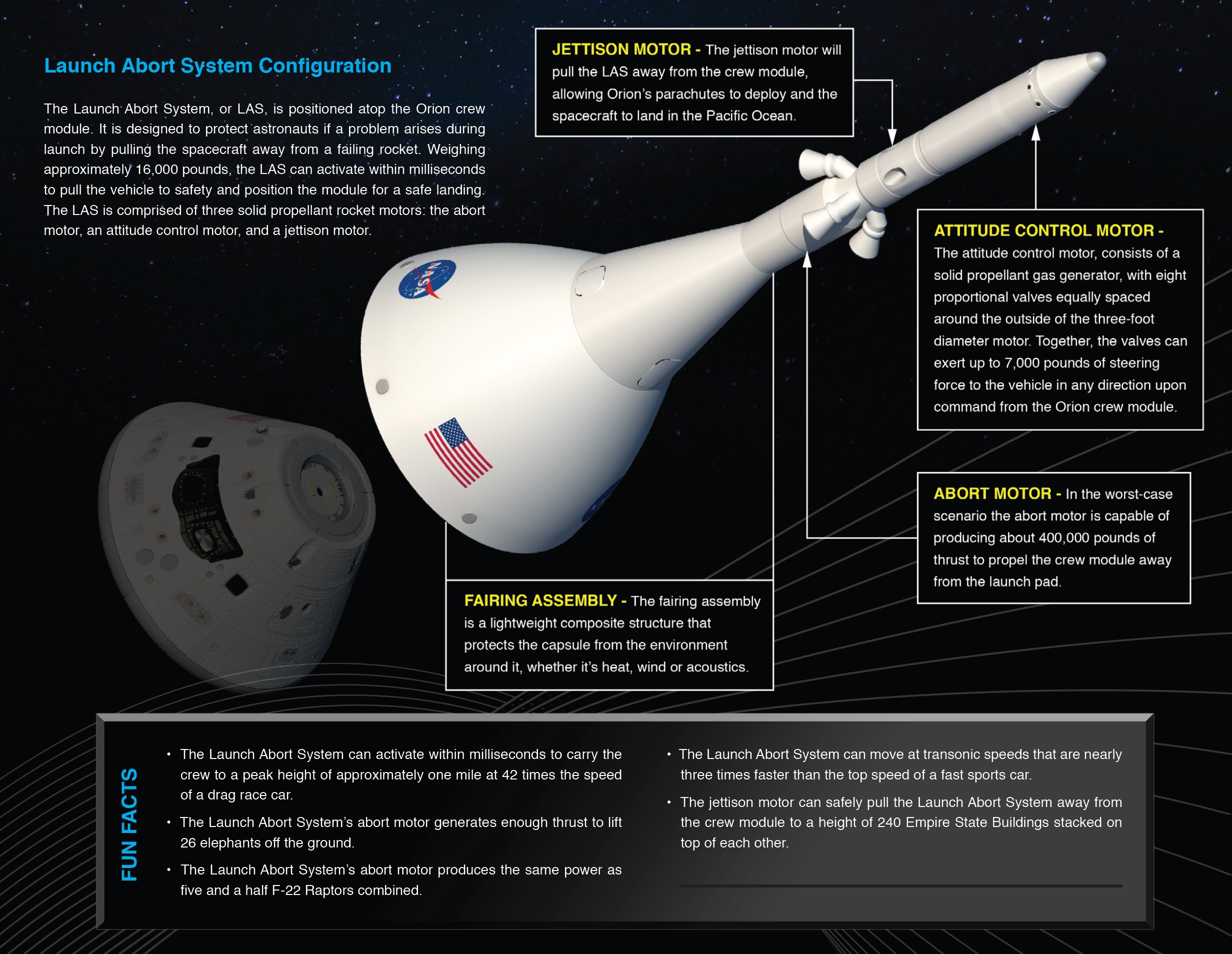Blown away! Watch NASA's Artemis 1 Launch Abort System blast off into space (video)
NASA's Orion spacecraft transforms into a glowing, pink palace as the launch escape tower zooms into the black.
Rage against the dying of the light in this new video.
NASA's Orion spacecraft cockpit shines in pink from the glow of its Launch Abort System (LAS) tower, ripping away from the Space Launch System (SLS) rocket and spacecraft stack. This all happened as planned during the epic launch of the Artemis 1 mission to the moon Nov. 16.
The movie-like moment, which looks like a scene from "Interstellar" or "Star Wars," shows the LAS flying away from the cockpit within sight of a mannequin astronaut that is testing out radiation and other space hazards before humans climb on board.
Lockheed Martin, which built the Orion spacecraft, shared the cockpit view on Twitter on Friday (Dec. 1), anticipating what astronauts will see with their own eyes starting with Artemis 2's expected journey around the moon in 2024. Lunar landing mission Artemis 3 will follow as soon as 2025, with more Artemis program missions in the works.
In photos: Artemis 1 launch: Amazing views of NASA's moon rocket debut
The SLS Launch Abort System generates enough thrust to lift 26 elephants off the ground, according to NASA statistics. That's more power than what is available to five F-22 jets.
NASA's version of 'The Force' is needed to pull astronauts away from the SLS rocket swiftly and safely in case of emergency. If the launch brings the crew to space without incident, however, the LAS tower tears away into space to reduce the mass of the capsule before its trip to the moon.
Get the Space.com Newsletter
Breaking space news, the latest updates on rocket launches, skywatching events and more!

Epic video from throughout Artemis 1 has kept the public riding along with the spacecraft around the moon and towards Earth again, bringing amazing live views of the lunar surface and our distant planet that left NASA engineers "giddy" with joy.
Orion is expected to splash down Dec. 11, after following in the footsteps of generations of missions featuring their own abort systems.
Related: The 25 scariest spaceflight moments show dangers in orbit and beyond
Most space systems with humans on board have been fitted with ejection seats or launch abort towers through crewed history, with the exception of latter missions of the space shuttle that instead had mission abort options with the crew remaining inside the vehicle.
Perhaps the most dramatic use of a real-life abort using a launch escape tower was the Soviet Union's Soyuz T-10-1 launch on Sept. 26, 1983. Russian space journalist Anatoly Zak says the system saved the lives of the launching crew as it pulled them away from an exploding rocket still on the launch pad.
The latest crewed abort on Oct. 11, 2018 during Soyuz mission MS-10 to the International Space Station did not use the escape tower, as that had been already jettisoned, but the crew used an alternate abort mode to make it back to ground swiftly and safely. (You can listen in to the abort as it happened in the video above.)
Private space providers have their own escape systems on their rockets, as was demonstrated during a dramatic Blue Origin uncrewed launch failure of the New Shepard system on Sept. 12, 2022. The emergency escape system pulled the capsule safely away from the booster, which was presumably destroyed, during launch. Blue Origin is investigating the cause and plans to launch people to space again no earlier than 2023, after having conducted six crewed missions with no incident.
Elizabeth Howell is the co-author of "Why Am I Taller?" (ECW Press, 2022; with Canadian astronaut Dave Williams), a book about space medicine. Follow her on Twitter @howellspace. Follow us on Twitter @Spacedotcom or Facebook.
Join our Space Forums to keep talking space on the latest missions, night sky and more! And if you have a news tip, correction or comment, let us know at: community@space.com.

Elizabeth Howell (she/her), Ph.D., was a staff writer in the spaceflight channel between 2022 and 2024 specializing in Canadian space news. She was contributing writer for Space.com for 10 years from 2012 to 2024. Elizabeth's reporting includes multiple exclusives with the White House, leading world coverage about a lost-and-found space tomato on the International Space Station, witnessing five human spaceflight launches on two continents, flying parabolic, working inside a spacesuit, and participating in a simulated Mars mission. Her latest book, "Why Am I Taller?" (ECW Press, 2022) is co-written with astronaut Dave Williams.









